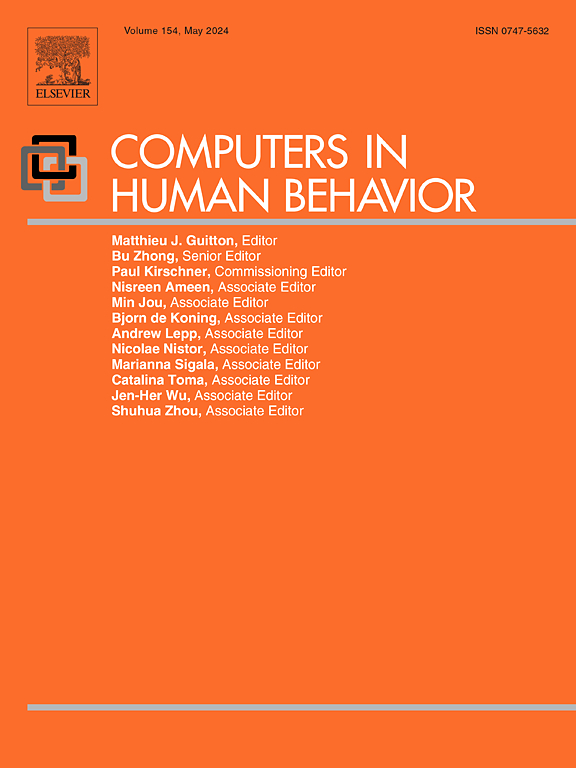观众如何理解深度假复活:现实主义、伦理和文化意义的多层次分析
IF 8.9
1区 心理学
Q1 PSYCHOLOGY, EXPERIMENTAL
引用次数: 0
摘要
这个探索性质的研究使用了一个多层次的框架,结合了技术的社会建构(SCOT)和认知-情感-规范(CAN)模型,来研究个人的感知、情感和反思是如何塑造人们对复活的深度赝品的接受程度的,尤其是那些以已故艺术家萨尔瓦多Dalí(超现实主义画家、雕塑家和教育/博物馆活动中的行为艺术家)和洛拉弗洛雷斯(民谣歌手,商业广告(啤酒广告)中的女演员和舞者。51名参与者(70.37%为女性,平均年龄为24.6岁)参加了6个在线焦点小组,观看了随机选择的两幅已故艺术家的深度伪造作品。主题分析使用现象学方法,主要通过两个关键层确定认知和评价反应(例如,对真实性和伦理考虑的判断):一级现实主义评估和二级社会影响评估。这些影响跨越了微观(个人)、中观(内容创造者/分发者)和宏观(整个社会)层面。大多数反应是认知驱动的,而情绪反应较少,主要表达的是不适或惊讶。此外,认知、情感和规范性反应是由制度目的和文化叙事塑造的。本研究通过将SCOT和CAN整合到分析数字复活深度伪造的多层次框架中,将微观层面的评估与更广泛的社会技术背景联系起来,做出了新的贡献。这些发现为媒体素养、文化遗产和合成媒体治理中的监管干预提供了理论见解和实践意义,特别是与复活的深度造假有关。本文章由计算机程序翻译,如有差异,请以英文原文为准。
How audiences make sense of deepfake resurrections: A multilevel analysis of realism, ethics, and cultural meaning
This exploratory qualitative study uses a multilevel framework, combining the Social Construction of Technology (SCOT) and the Cognitive-Affective-Normative (CAN) model, to examine how individual perceptions, emotions, and reflections shape acceptance of resurrection deepfakes, particularly those featuring deceased artists Salvador Dalí (surrealist painter, sculptor, and performance artist in a educative/museum campaign) and Lola Flores (folk singer, actress and dancer in a commercial/beer advertisement). Fifty-one participants (70.37 % female; Mean Age = 24.6) took part in six online focus groups, viewing two randomly selected deepfakes of deceased artists. Thematic analysis, using a phenomenological approach, identified primarily cognitive and evaluative reactions (e.g., judgments of authenticity and ethical considerations) with two key layers: first-order evaluations of realism and second-order societal impact assessments. These impacts spanned micro (individuals), meso (content creators/distributors), and macro (society-wide) levels. Most reactions were cognitively driven, while emotional responses were fewer and largely expressed discomfort or surprise. Moreover, cognitive, affective, and normative responses were shaped by institutional purposes and cultural narratives. This study makes a novel contribution by integrating SCOT and CAN into a multilevel framework for analyzing digital resurrection deepfakes, bridging micro-level appraisals with broader sociotechnical contexts. The findings yield theoretical insights and practical implications for media literacy, cultural heritage, and regulatory interventions in the governance of synthetic media, with particular relevance to resurrection deepfakes.
求助全文
通过发布文献求助,成功后即可免费获取论文全文。
去求助
来源期刊

Computers in Human Behavior
Multiple-
CiteScore
19.10
自引率
4.00%
发文量
381
审稿时长
40 days
期刊介绍:
Computers in Human Behavior is a scholarly journal that explores the psychological aspects of computer use. It covers original theoretical works, research reports, literature reviews, and software and book reviews. The journal examines both the use of computers in psychology, psychiatry, and related fields, and the psychological impact of computer use on individuals, groups, and society. Articles discuss topics such as professional practice, training, research, human development, learning, cognition, personality, and social interactions. It focuses on human interactions with computers, considering the computer as a medium through which human behaviors are shaped and expressed. Professionals interested in the psychological aspects of computer use will find this journal valuable, even with limited knowledge of computers.
 求助内容:
求助内容: 应助结果提醒方式:
应助结果提醒方式:


